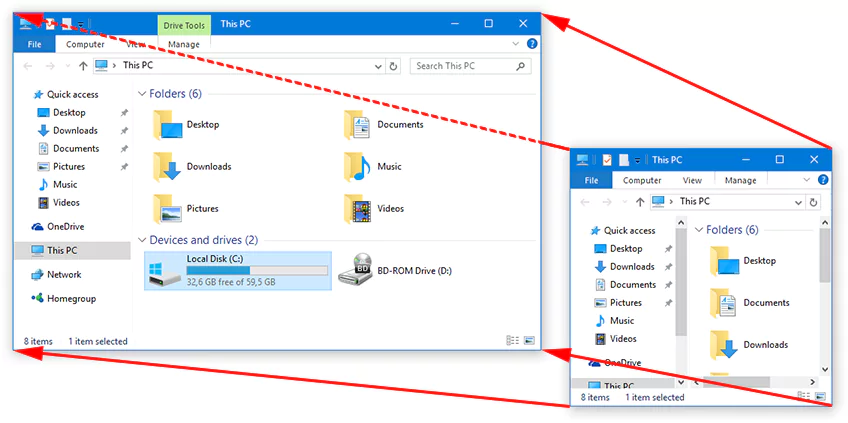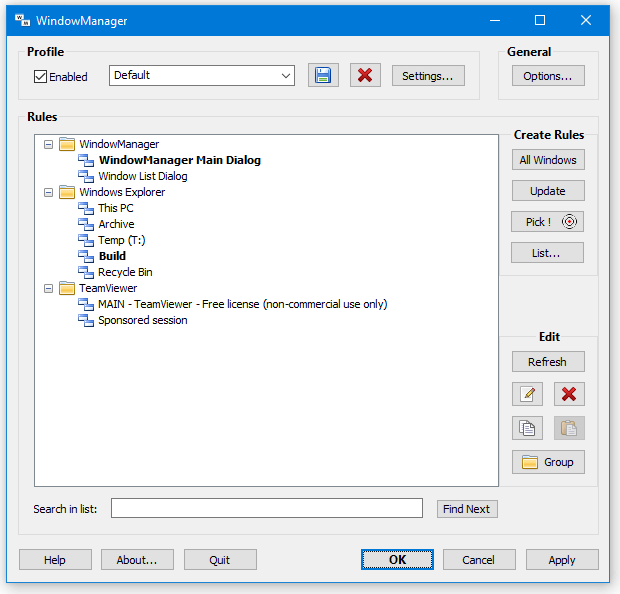Do you have a Windows operating system and want a WindowManager PreActivated / RePack / Crack / Full Version free download link? You’re in the right place.
In this post, you can find a WindowManager Crack download link and download it at high speed because we provide a WindowManager Full Version direct download link with a high-speed server.
WindowManager is a graphical user interface and system software required to manage the placement and appearance of windows in a windowing system. Its main purpose is to help create a unified desktop environment by controlling visual aspects such as window placement and visibility.
WHAT IS WINDOWMANAGER?
WindowManager acts as the core software of the graphical user interface system and defines the structure and aesthetics of windows in the windowing system. Its main purpose is to contribute to a user-friendly desktop environment. On Android, WindowManager is an important system service that manages the z-order hierarchy of windows, determines which windows are visible, and controls their location on the screen. This service plays an important role in performing window transitions and animations when starting and closing the application and rotating the screen.
WindowManager improves user workflow by remembering and retrieving the position and size of programs and windows. This feature provides users with a consistent, personalized user experience and allows them to continue working with window settings as before. The WindowManager on Android is a dynamic component that greatly contributes to the overall flexibility and efficiency of the graphical user interface, making it an integral part of the user interaction of the Android operating system.
OVERVIEW OF WINDOWMANAGER
WindowManager is an important component of operating systems, especially the graphical user interface (GUI), which acts as system software that precisely controls the placement and appearance of windows in a windowing system. Its main purpose is to create and maintain an organized and visible unified desktop environment for users. The role of WindowManager goes beyond basic window management; This includes tasks such as window positioning, z-order control, resizing, handling focus, and providing window decorations such as borders and titles.
Within the Android operating system, WindowManager takes the form of a system service that manages the z-ordered list of windows and manages the display and layout on the screen. This includes managing dynamic transitions and animation effects associated with opening and closing apps or rotating the screen, contributing to a smooth and visually appealing user experience.
A unique feature of WindowManager is its ability to improve user workflow by recalling and restoring the position and size of previously opened applications and windows. This feature provides continuity in the user’s work environment, allows for seamless transitions, and maintains a permanent location of frequently used applications.
Different operating systems and desktop environments may have their own WindowManager implementations. For example, Microsoft Windows has a WindowManager, while the X window system used in Unix-like operating systems runs window managers. On Linux, desktop environments such as GNOME and KDE often include window management components.
WindowManager plays an important role in creating a user-friendly interface by allowing users to interact with their programs and manage multiple tasks simultaneously. Its capabilities are focused on optimizing the use of screen real estate, managing multitasking, and creating the foundation for additional features such as virtual desktops or workspaces.
In summary, It is the core element of the graphical user interface and is responsible for managing the visual elements and actions of Windows, contributing to a seamless and efficient user experience across various operating systems and platforms. For more update details join Softowa telegram channel.
FEATURES OF WINDOWMANAGER
Window Position: The ability to determine where a new window will appear on the screen when it opens.
Z-Order Management: Controls the order of the window stack and decides which windows are at the front and which are at the back.
Window Resizing: Handles user interactions for window resizing and allows users to adjust the size of open windows.
Window Focus: Which window currently has focus and receives user input? This includes handling keyboard input and redirecting to the appropriate window.
Window Decoration: Provides visual elements such as borders, title bars, and buttons for minimizing, maximizing, and closing windows.
Window transitions and animations: Manage dynamic effects when opening, closing, or switching between windows to improve the user experience.
Screen rotation: On mobile devices or systems with rotating screens, WindowManager can adjust the window position and orientation.
Workspace management: Some WindowManagers support virtual desktops or workspaces, which allow users to organize and switch between different sets of open windows.
Taskbar/Dock Integration: Work with taskbars or docks to display icons and icons of open windows for quick access and navigation.
User Settings: Provides users with options to change window status, appearance, and other settings, and to customize the interface to suit their needs.
Window Locking: This allows you to move windows to a predefined position on the screen for efficient multitasking and layout.
Multi-monitor support: Control window placement and movement in multi-monitor setups.
Automatic recall of window position and size: Improves workflow and maintains smooth layout by remembering and recalling window position and size.
SCREENSHOTS


SYSTEM REQUIREMENTS
- Supported OS: Windows 11/10/8.1/7
- Memory (RAM): 512 MB of RAM or more is required
- Hard Disk Space: 32 MB or more required







